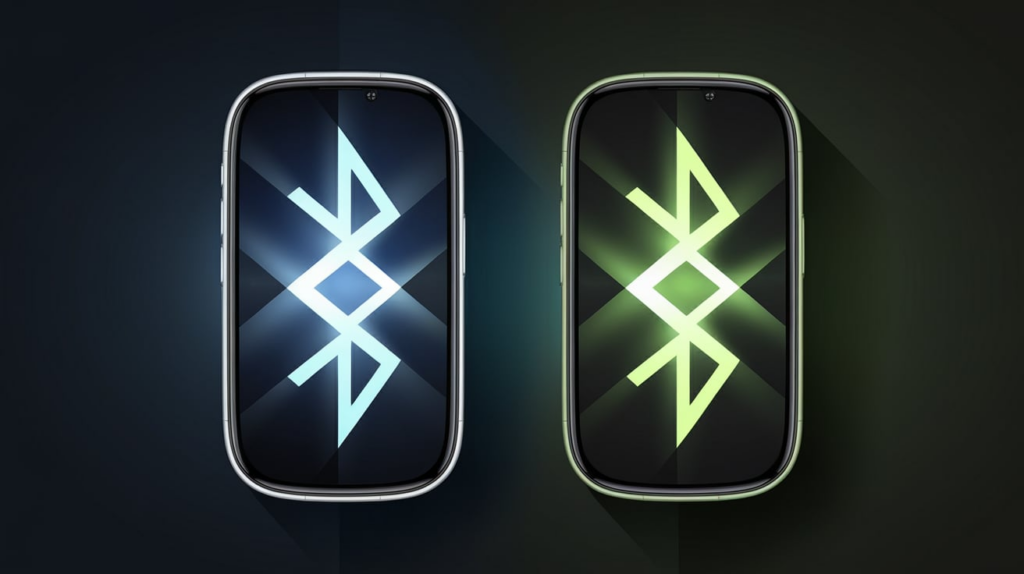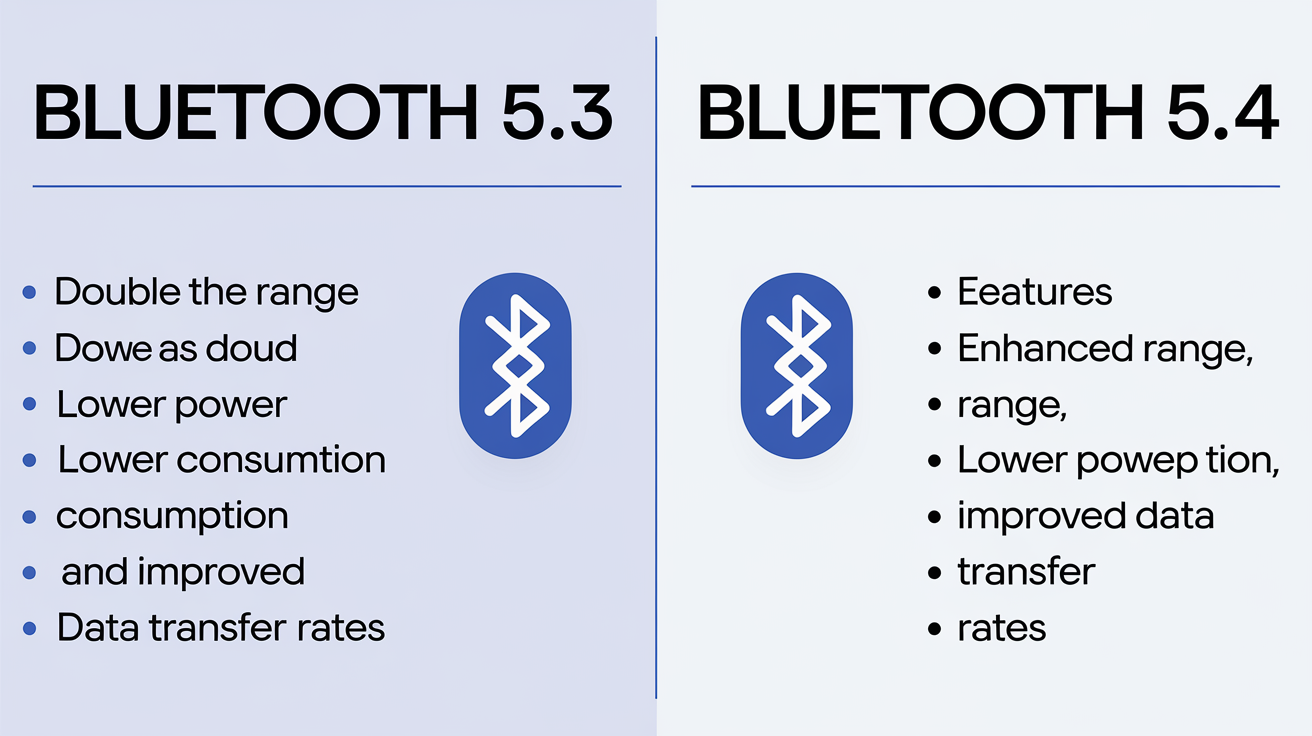Bluetooth technology has come a long way since its inception, with each iteration bringing more advanced features and greater capabilities. With the release of Bluetooth 5.4, many wonder how it compares to its predecessor, Bluetooth 5.3. While Bluetooth 5.3 already offered strong performance and security, Bluetooth 5.4 seems to elevate these aspects even further. So, what exactly sets these two versions apart, and is it worth upgrading? Let’s dive in and review both versions to determine which one comes out on top.
What’s New in Bluetooth 5.3?
Bluetooth 5.3, released in July 2021, introduced several improvements aimed at enhancing connection stability, security, and efficiency. Here’s a closer look at the key advancements it brought to the table:
- Connection subrating: Bluetooth 5.3 improved connection stability, particularly in environments with high interference, making it more reliable in challenging conditions.
- Encryption key size control: It allowed better control over encryption key sizes, ensuring more secure data transmission.
- Periodic advertising enhancements: This upgrade enhanced device discovery and made data exchange more efficient.
- Channel classification: Optimized frequency usage for better overall performance.
Despite these impressive improvements, Bluetooth 5.3 didn’t change the maximum data transfer speed (still 2 Mbps) or the maximum range (240 meters). These key aspects remained identical to earlier versions.
What’s New in Bluetooth 5.4?
Released in July 2023, Bluetooth 5.4 introduced some groundbreaking features aimed at improving security, efficiency, and audio quality. Key features include:
- Periodic Advertising with Responses (PAwR): Bluetooth 5.4 allows devices to respond to periodic advertising, significantly improving efficiency while reducing power consumption. This is particularly useful for Internet of Things (IoT) devices that rely on low-power operation.
- Enhanced Attestation: This feature improves device authentication and strengthens security protocols.
- ISO/IEC 24731: Bluetooth 5.4 supports standardized data exchange formats, making it easier for devices to communicate seamlessly.
- LE Audio: A standout feature, LE Audio introduces the LC3 codec, offering higher quality audio at lower power consumption rates.
- Improved coexistence with Wi-Fi: Bluetooth 5.4 has enhanced its ability to coexist with Wi-Fi signals, reducing interference and ensuring smoother performance in wireless environments.
Like Bluetooth 5.3, Bluetooth 5.4 maintains the same maximum data transfer speed (2 Mbps) and maximum range (240 meters), but the new features bring notable upgrades that enhance the overall user experience.
How Do the Features Compare?
When comparing Bluetooth 5.3 to Bluetooth 5.4, the differences mainly lie in the added features and improved efficiencies introduced by the newer version. Here’s a summary of the key differences:
FeatureBluetooth 5.3Bluetooth 5.4
Periodic Advertising with Responses No Yes
Enhanced Attestation No Yes
ISO/IEC 24731 No Yes
LE Audio No Yes
Improved coexistence with Wi-Fi No Yes
Is Bluetooth 5.4 Worth the Upgrade?
While Bluetooth 5.3 already offered solid performance and reliable connections, Bluetooth 5.4 introduces enough new features to make it an attractive upgrade for specific users. LE Audio, for instance, is a game-changer for those seeking better audio quality without draining battery life. The improvements in security and the ability to reduce power consumption through Periodic Advertising with Responses also make Bluetooth 5.4 ideal for IoT devices.
For casual users, the differences between Bluetooth 5.3 and 5.4 might not be immediately noticeable. If your current devices perform well on Bluetooth 5.3, upgrading to Bluetooth 5.4 may not be urgent. However, if you’re a tech enthusiast, work in environments with high wireless interference, or rely heavily on Bluetooth for audio streaming, Bluetooth 5.4 could provide the enhancements you need.

The Role of Backward Compatibility
One key advantage of Bluetooth 5.4 is its backward compatibility with earlier Bluetooth versions. This means devices that support Bluetooth 5.4 will still be able to communicate with older devices, ensuring a smooth user experience even if you don’t upgrade all your Bluetooth-enabled gadgets at once.
Also read:Types of Earbuds
Conclusion: Should You Upgrade?
When deciding between Bluetooth 5.3 and Bluetooth 5.4, it largely depends on your individual needs. If security, efficient power consumption, and enhanced audio quality are priorities for you, Bluetooth 5.4 is the clear winner. Its added features make it a more efficient and secure version that’s especially valuable for newer devices and those using audio-heavy or IoT applications.
However, if you’re satisfied with your current device’s Bluetooth 5.3 performance and don’t need the latest improvements, there’s no immediate need to rush into an upgrade. Both versions maintain the same data transfer speed and range, so everyday users may not feel the difference unless they utilize specific features like LE Audio or operate in areas with high interference.
Ultimately, Bluetooth 5.4 represents a significant step forward, but Bluetooth 5.3 still holds its ground as a reliable and efficient technology. For most users, upgrading may depend more on the release of new devices supporting Bluetooth 5.4, rather than the need to update existing hardware.
Bluetooth 5.4 may be the future, but Bluetooth 5.3 continues to serve the present admirably.







